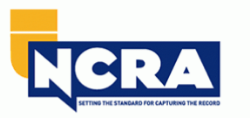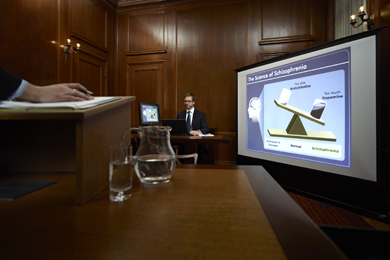Trial Presentation Advanced Technology for Engaging Courtroom Presentations
Trial Presentation Advanced Technology for Engaging Courtroom Presentations
Blog Article
Captivate the Jury: Crucial Elements of a Powerful Trial Presentation
In the realm of lawful campaigning for, the ability to mesmerize a jury is vital to the end result of a test (trial presentation). Important aspects such as comprehending the target market, crafting an engaging story, and understanding spoken and non-verbal communication are essential elements of an efficient presentation. The calculated usage of aesthetic aids can substantially improve comprehension and retention of essential debates. As these factors link, they create a natural method that not only informs however also engages jurors on several levels. What specific strategies can genuinely change a conventional discussion into a memorable experience for the jury?

Comprehending Your Target Market
Understanding your target market is a crucial element of effective trial discussion. A successful presentation rests on the capacity to comprehend the demographics, values, and tendencies of jurors. This understanding informs exactly how debates are mounted, evidence is provided, and psychological appeals are crafted, making sure that the message reverberates with the jurors on a personal level.
Research indicates that jurors come from diverse histories and might have differing degrees of recognizing pertaining to lawful process. In addition, understanding the jurors' possible prejudices and life experiences allows the test presenter to prepare for arguments and address problems proactively.
Effective test presentation additionally includes observing jurors' reactions during the process. Engaging with jurors as people rather than a cumulative system is necessary in promoting a strong connection in the court room.

Crafting a Compelling Story
Crafting an engaging narrative is crucial in assisting jurors with the intricacies of a situation. A well-structured story not only simplifies complex legal principles but additionally engages jurors on an emotional level, making the details much more relatable and remarkable.
To accomplish this, attorneys must begin by determining the core message they desire to communicate. This message needs to resonate with the jurors' worths and experiences, fostering a link that goes beyond mere truths. The story ought to unravel realistically, offering occasions in a clear sequence to prevent complication. This chronological technique can aid jurors follow the development of events, highlighting domino effect.
Including human elements-- such as personal stories or narratives-- can better boost the story's impact. These aspects evoke compassion, permitting jurors to imagine the repercussions of the situation on realities. In addition, employing a consistent motif throughout the discussion strengthens the primary debate, making it less complicated for jurors to retain vital points.
Ultimately, a compelling narrative transforms a trial presentation from a mere recitation of facts into an influential tale that astounds the court, motivating them to ponder with both reason and feeling.
Making Use Of Aesthetic Help
Incorporating aesthetic aids into a test discussion can considerably boost jurors' comprehension and retention of information. Visual materials such as charts, layouts, photos, and videos can change complicated lawful concepts and proof right into easily absorbable styles. By involving several detects, these help allow jurors to envision the situation's essential components, making it much easier for them to follow along and comprehend elaborate information.
Additionally, well-designed visual help can highlight crucial points and emphasize connections in between different items of proof. As an example, timelines can successfully illustrate the series of events, while annotated pictures can make clear specific information relevant to the situation. This not only help in understanding yet also strengthens the story presented by the attorney.
It is essential, nevertheless, to make certain that visual aids matter, clear, and skillfully presented. Extremely intricate or cluttered visuals may overwhelm jurors and diminish the message. When visit site used deliberately, aesthetic aids serve to match the oral disagreements and boost the total influence of the trial discussion. Ultimately, efficient aesthetic interaction can be an effective device in encouraging jurors and assisting them get to informed verdicts.
Grasping Verbal Interaction
Reliable spoken communication is important in a trial presentation, as it acts as the primary means whereby lawyers share their debates and attach with jurors. Understanding this ability entails quality, persuasion, and engagement. Attorneys must articulate their points plainly and briefly, content avoiding lawful jargon that may confuse jurors. Simpleness in language cultivates understanding and aids jurors understand complex concerns offered during the trial.
Furthermore, tone and pacing dramatically effect just how messages are gotten. A certain tone shares authority, while proper pacing enables jurors to absorb info without feeling bewildered. Attorneys must also differ their vocal inflections to stress bottom lines and preserve jurors' rate of interest throughout the presentation.
Furthermore, the organization of verbal debates is essential. Structuring the narrative practically and coherently aids jurors comply with the attorney's logic, making it simpler for them to retain important information. Making use of convincing methods, such as storytelling, can additionally boost the psychological vibration of the disagreements presented, consequently producing a much more extensive connection with jurors.
Eventually, understanding verbal communication not only reinforces a lawyer's situation however additionally promotes trust and relationship with the jury, substantially improving the chances of a beneficial decision.

Engaging With Body Language
Nonverbal interaction plays a crucial function in trial discussions, typically conveying messages that words alone can not express. Body language, encompassing gestures, posture, face expressions, and eye get in touch with, significantly influences how jurors regard the credibility and genuineness of the speaker. A certain position, with shoulders back and an open position, can impart depend on, while closed-off body movement may recommend defensiveness or unpredictability.

Faces ought to mirror the feelings linked with the instance, strengthening the narrative being provided. An honest expression throughout a touching minute can evoke empathy and reinforce the psychological allure. Eventually, understanding body movement is essential for reliable trial discussions, as it enhances verbal interaction and establishes a compelling presence that reverberates with the court.
Final Thought
Finally, astounding the court demands a strategic approach that encompasses understanding the audience, crafting an engaging narrative, making use of visual aids, mastering verbal interaction, and engaging through body movement. Each component plays a vital role in producing a powerful test discussion that resonates with jurors on both psychological and intellectual degrees (trial presentation). By integrating these parts properly, attorneys can significantly improve their capacity to convince and affect court decision-making
Report this page